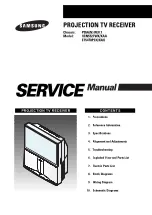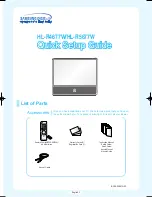
ratio has to be calculated) is the actual pickup value as got with actual
restraining from the voltage restraining quantity.
10.7.1.4
Overcurrent feature with directionality
SEMOD56488-60 v5
Please note that the directional characteristic can be set in two different ways either
just dependent on the angle between current and polarizing voltage (setting
parameter
DirPrinc_OC1
or
DirPrinc_OC2
set to or in a way that the operate
value also is dependent on the angle between current and polarizing voltage
according to the I · cos(
F
) law (setting parameter
DirPrinc_OC1
or
DirPrinc_OC2
set to I · cos(
F
). This has to be known if a more detailed measurement of the
directional characteristic is made, than the one described below.
Procedure
1.
Connect the test set for injection of three-phase currents and three-phase
voltages to the appropriate current and voltage terminals of the IED.
2.
Inject current(s) and voltage(s) in a way that relevant measured (according to
setting parameter
CurrentInput
and
VoltageInput
) currents and voltages are
created from the test set.
3.
Set the relevant measuring quantity current to lag or lead (lag for negative
RCA angle and lead for positive RCA angle) the relevant polarizing quantity
voltage by an angle equal to the set IED characteristic angle (rca-dir) when
forward directional feature is selected and the
CTstarpoint
configuration
parameter is set to
ToObject
.
If reverse directional feature is selected or
CTstarpoint
configuration
parameter is set to
FromObject
, the angle between current and polarizing
voltage shall be set equal to rca-dir+180°.
4.
Overall check in principal as above (non-directional overcurrent feature)
5.
Reverse the direction of the injection current and check that the protection
does not operate.
6.
Check with low polarization voltage that the feature becomes non-directional,
blocked or with memory according to the setting.
10.7.1.5
Over/Undervoltage feature
SEMOD56488-83 v2
Procedure
1.
Connect the test set for injection three-phase voltages to the appropriate
voltage terminals of the IED.
2.
Inject voltage(s) in a way that relevant measured (according to setting
parameter
VoltageInput
) voltages are created from the test set.
3.
Overall check in principal as above (non-directional overcurrent feature) and
correspondingly for the undervoltage feature.
1MRK 505 372-UEN A
Section 10
Testing functionality by secondary injection
Busbar protection REB670 2.2 IEC
127
Commissioning manual
















































